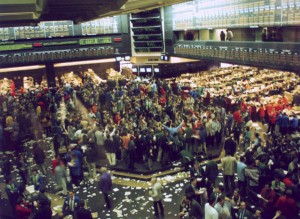My article on contract farming titled “As You Sow, So Shall You Reap: The Welfare Impacts of Contract Farming” is finally out in World Development. Here is the abstract:
Contract farming is widely perceived as a means of increasing welfare in developing countries. Because of smallholder self-selection in contract farming, however, it is not clear whether contract farming actually increases grower welfare. In an effort to improve upon existing estimates of the welfare impacts of contract farming, this paper uses the results of a contingent-valuation experiment to control for unobserved heterogeneity among smallholders. Using data across several regions, firms, and crops in Madagascar, results indicate that a 1-percent increase in the likelihood of participating in contract farming is associated with a 0.5-percent increase in household income, among other positive impacts.
If I had to summarize the paper’s contribution informally, I’d say the estimates it presents of the welfare impacts of contract farming have better internal and external validity than those found in previous studies.
Click here for an ungated, older version (link opens a .pdf document), but note that the results in the ungated version had not undergone peer review, so they are not as solid.
